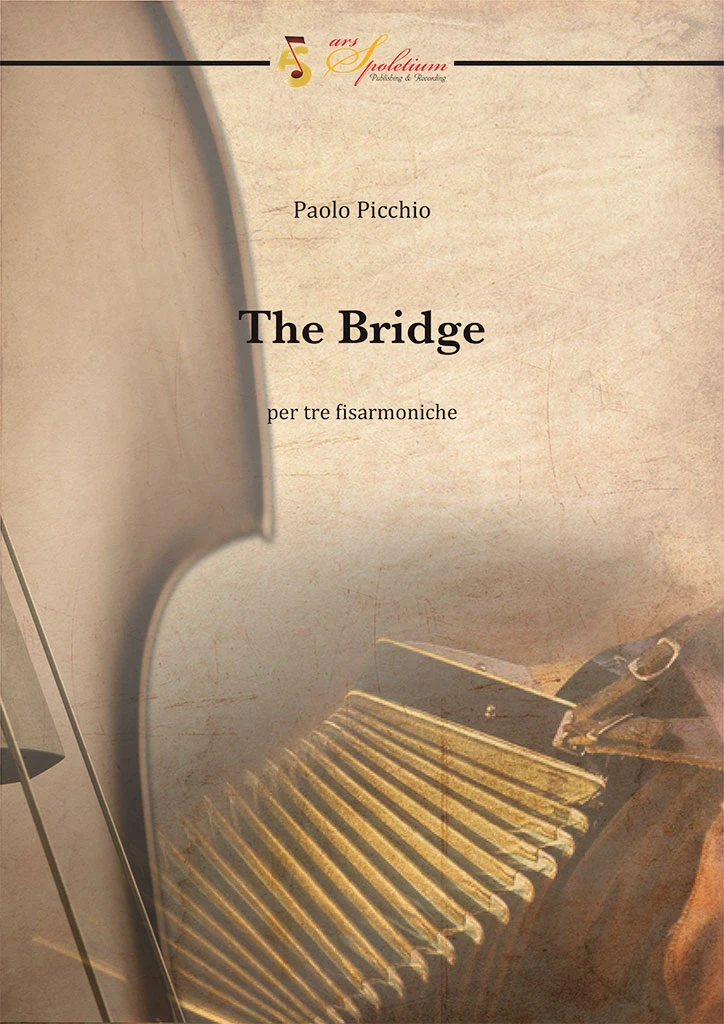The Bridge
The Bridge è una composizione per tre fisarmoniche da concerto che utilizza tecniche tipiche della scrittura minimalista. Il brano è strutturato in tre parti (parte più lenta al centro) in cui la prima e la terza presentano una variante della forma ‘ad arco’.
The Bridge is a composition for three concert accordions that uses techniques typical of minimalist writing. The piece is structured in three parts (slower part in the center) in which the first and third have a variant of the ‘arch’ shape.
The Bridge è una composizione per tre fisarmoniche da concerto scritta in suoni reali (i registri con il 16’ sono tutti innalzati di una ottava, mentre il registro 4’ è abbassato di una ottava). In questo trio è previsto che ci sia sempre una parte principale che deve emergere: nelle sezioni in 7/8 è la prima fisarmonica, nella parte più lenta centrale è la seconda fisarmonica.
L’opera nasce da una riflessione sulla struttura della forma ad arco (anche detta forma ‘ponte’ da cui deriva il titolo). Il gioco compositivo si basa sulla contrapposizione di elementi che sono ripresentati rispettando l’idea della forma “ponte”, mentre altri no (come ad esempio la dinamica che è in crescendo in entrambe le due sezioni in 7/8). Oltre alla manipolazione formale degli elementi tematici, il brano rimanda comunque ai procedimenti cari al minimalismo, basandosi essenzialmente su un gioco di ripetizione continua.
The Bridge it is a composition for three concert-accordions written in real sounds (the registers with the 16 ‘are all raised by an octave, while the register 4’ is lowered by an octave). In this trio it is expected that there is always a main part that must emerge: in the 7/8 sections it is the first accordion, in the slower central part it is the second accordion.
The work stems from a reflection on the structure of the arch shape (also called the ‘bridge’ shape from which the title derives). The compositional game is based on the juxtaposition of elements that are re-presented respecting the idea of the “bridge” form, while others are not (such as the dynamic that is growing in both sections in 7/8). In addition to the formal manipulation of the thematic elements, the piece still refers to the procedures dear to minimalism, essentially based on a game of continuous repetition.




